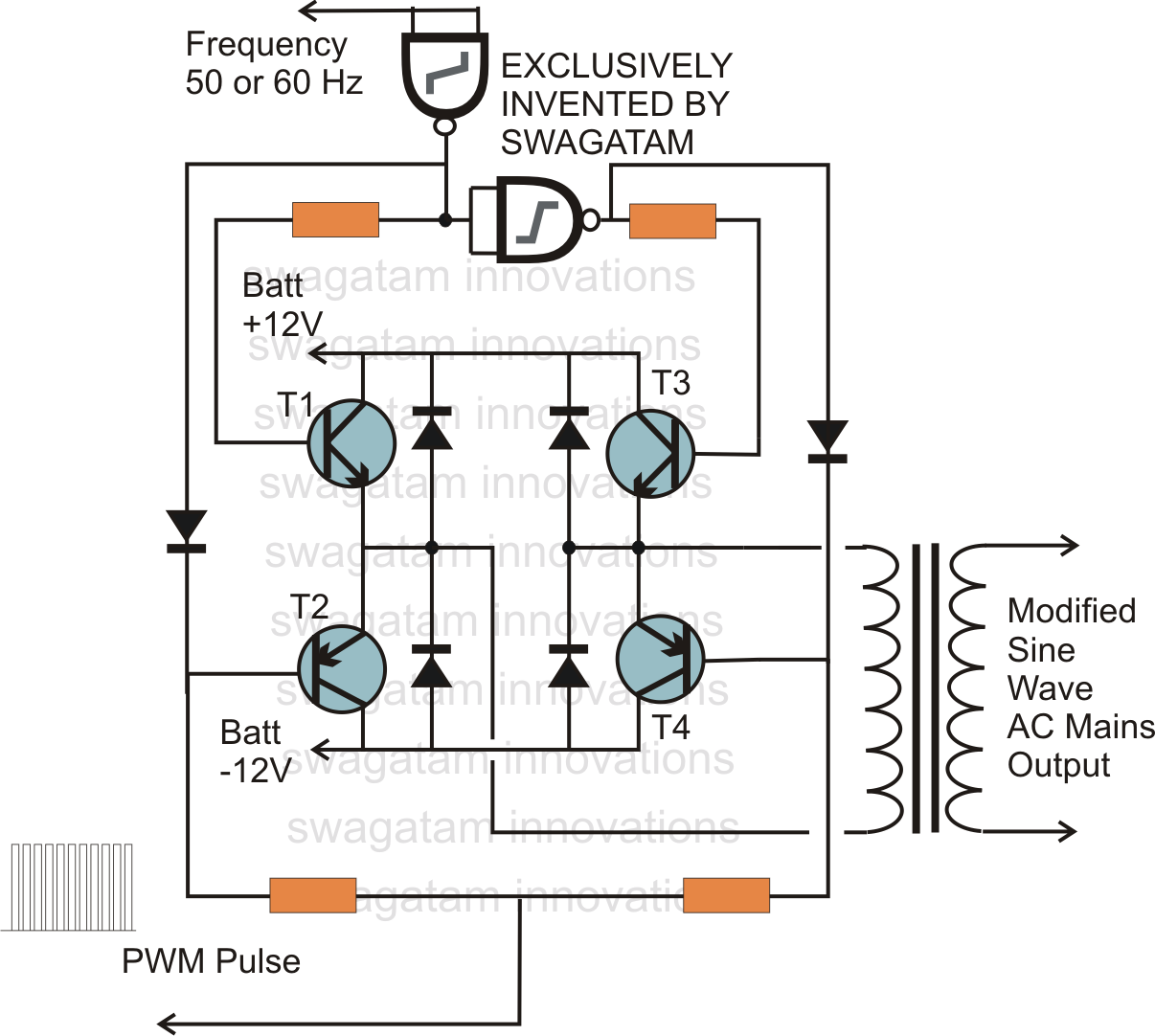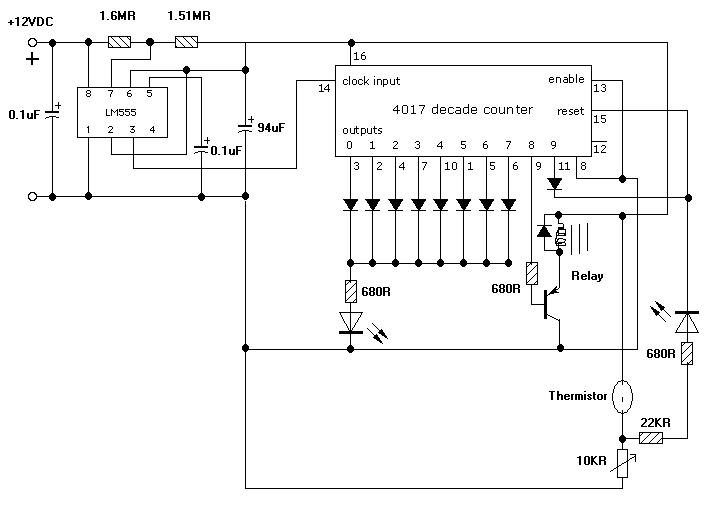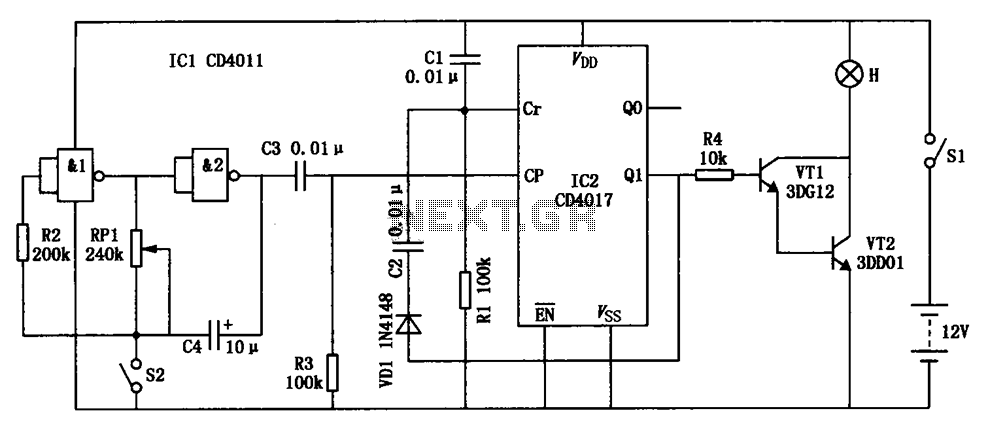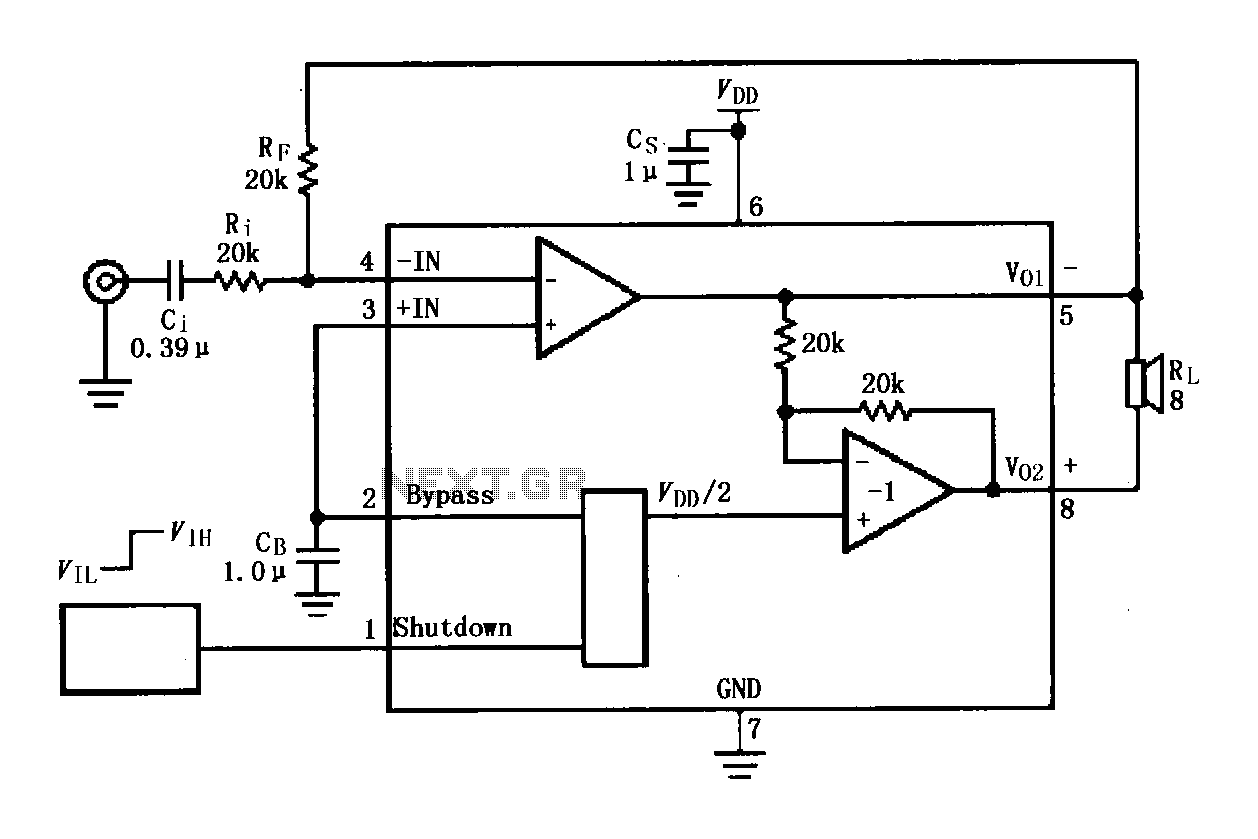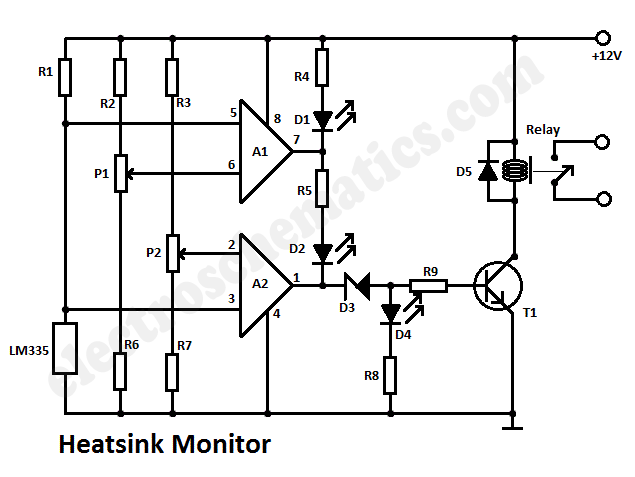
Protected Intrinsically Safe Op Amp Circuit
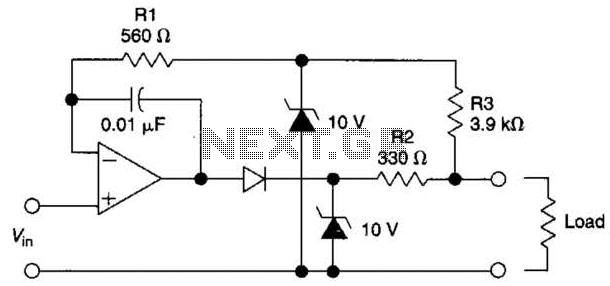
The circuit is designed to drive an external load. A fault condition in the external load circuit could feed excessive current or voltage back into the line drive circuit. If excessive voltage appears from the load, the two zener diodes will clamp that voltage to a safe level, which in this case is 10 V. The current in the zener diodes, operational amplifier, and the remainder of the circuitry is limited to a safe level by resistors R1, R2, and R3. Diode D1 protects the operational amplifier output stage from 10 V appearing across the clamp diodes under a fault condition.
The advantage of this circuit is that, although it is designed as a unity gain buffer, the same techniques can be applied to inverting, non-inverting, or differential gain stages.
This circuit serves as a protective driving mechanism for external loads, ensuring safe operation under fault conditions. The operational amplifier (op-amp) is configured as a unity gain buffer, providing high input impedance and low output impedance, which is ideal for isolating the load from the driving circuitry. The two zener diodes are strategically placed to clamp any excessive voltage that may arise from the load, thereby protecting downstream components. The clamping voltage is set at 10 V, ensuring that the op-amp and other sensitive components are shielded from potentially damaging voltages.
Resistors R1, R2, and R3 play a crucial role in limiting the current flowing through the zener diodes and the op-amp. This current limiting is essential to prevent thermal runaway and damage to the components during fault conditions. The selection of resistor values should be based on the maximum expected load current and the zener diode specifications to ensure that all components operate within their safe limits.
Diode D1 is included to provide additional protection to the op-amp output stage. In the event that the clamp diodes are activated due to an overvoltage condition, D1 prevents reverse voltage from affecting the op-amp, thereby maintaining the integrity of the signal and the operational capability of the circuit.
The versatility of this circuit design allows it to be adapted for various configurations, including inverting, non-inverting, and differential gain stages, making it a robust solution for different applications requiring voltage clamping and current limiting features. This adaptability enhances its utility in a wide range of electronic systems where load conditions may fluctuate or where fault tolerance is necessary. The circuit is designed to drive an external load. A fault condition in the external load circuit could feed excessive current or voltage back into the line drive circuit. If excessive voltage appears from the load, the two zener diodes will clamp that voltage to a safe level, which in this case is 10 V.The current in the zener diodes, op amp, and the remainder of the circuitry is limited to a safe level by resistors Rl, R2, and R3.
D1 protects the op-amp output stage from 10 V appearing across the clamp diodes under a fault condition. The advantage of this circuit is that, although it`s designed as unity gain buffer, the same techniques can be applied to inverting, noninverting, or differential gain stages.
The advantage of this circuit is that, although it is designed as a unity gain buffer, the same techniques can be applied to inverting, non-inverting, or differential gain stages.
This circuit serves as a protective driving mechanism for external loads, ensuring safe operation under fault conditions. The operational amplifier (op-amp) is configured as a unity gain buffer, providing high input impedance and low output impedance, which is ideal for isolating the load from the driving circuitry. The two zener diodes are strategically placed to clamp any excessive voltage that may arise from the load, thereby protecting downstream components. The clamping voltage is set at 10 V, ensuring that the op-amp and other sensitive components are shielded from potentially damaging voltages.
Resistors R1, R2, and R3 play a crucial role in limiting the current flowing through the zener diodes and the op-amp. This current limiting is essential to prevent thermal runaway and damage to the components during fault conditions. The selection of resistor values should be based on the maximum expected load current and the zener diode specifications to ensure that all components operate within their safe limits.
Diode D1 is included to provide additional protection to the op-amp output stage. In the event that the clamp diodes are activated due to an overvoltage condition, D1 prevents reverse voltage from affecting the op-amp, thereby maintaining the integrity of the signal and the operational capability of the circuit.
The versatility of this circuit design allows it to be adapted for various configurations, including inverting, non-inverting, and differential gain stages, making it a robust solution for different applications requiring voltage clamping and current limiting features. This adaptability enhances its utility in a wide range of electronic systems where load conditions may fluctuate or where fault tolerance is necessary. The circuit is designed to drive an external load. A fault condition in the external load circuit could feed excessive current or voltage back into the line drive circuit. If excessive voltage appears from the load, the two zener diodes will clamp that voltage to a safe level, which in this case is 10 V.The current in the zener diodes, op amp, and the remainder of the circuitry is limited to a safe level by resistors Rl, R2, and R3.
D1 protects the op-amp output stage from 10 V appearing across the clamp diodes under a fault condition. The advantage of this circuit is that, although it`s designed as unity gain buffer, the same techniques can be applied to inverting, noninverting, or differential gain stages.

